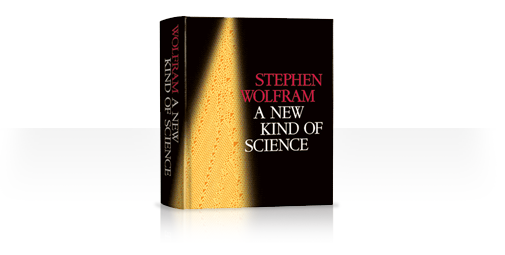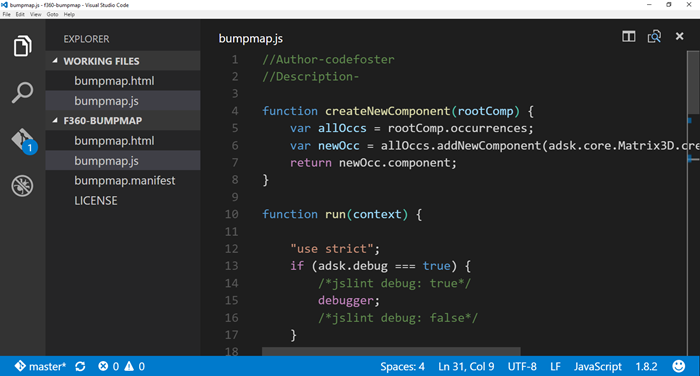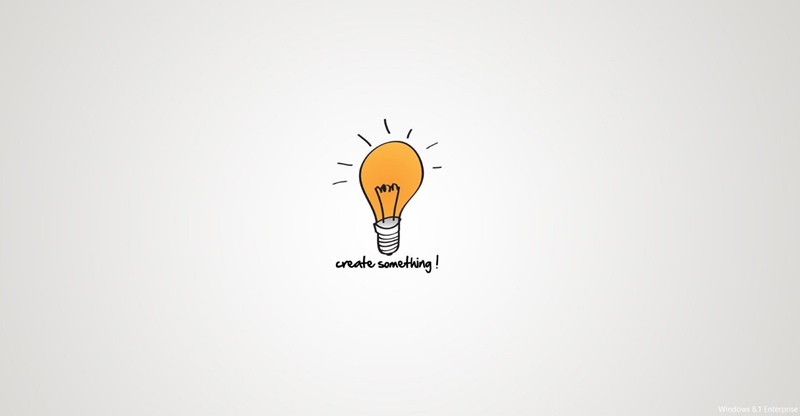Posts tagged with "make"
Building Things Using Fusion 360 and JavaScript
I like making things.
I used to mostly just make things that show up on the computer screen - software things. Lately, however, I’ve been re-inspired to make real things. Things out of wood and things out of plastic and metal and fabric and string.
The way I see it, we design things either manually or generatively.
By manual I mean that I conceive an idea then design and build it step by step. I - the human - am involved every step of the process. Imperative code is manual. Here’s some pseudocode to describe what I’m talking about…
// step 1 |
See what I mean?
I’m not arguing that this sort of code and likewise this sort of technique for building is not essential. It is. I am, however, going to propose that it’s often not altogether exciting or inspiring. The reason, IMO, is that the entire process is no greater than the individual or organization that implements it. An individual only has so many hours in the day and is even limited in ideas. An organization can grow rather large and put far more time and effort into a problem and obviously generate more extensive results. But the results are always linearly related to the effort input - not so exciting.
By generative I mean that instead of creating a thing, I create rules to make a thing. The rules may be non-deterministic and the results completely unexpected - even from one run to another. The results often end up looking very much like what we find in nature - the fractal patterns in leaves, the propagation of waves on the water, or the absolute beauty of ice crystals up close.
What’s exciting is when an individual or organization puts their time and effort into defining rules instead of defining steps. That is, after all, the way our own brains work, and in fact, that’s the way the rest of nature works too. It’s amazing and awesome and I would venture to say it’s even miraculous.
I think a lot of my ideas on the matter parallel and perhaps stem from Stephen Wolfram’s book A New Kind of Science.

Most of the book is about cellular automata. The simple way to understand these guys is to think back to Conway’s Game of Life. The game is basically a grid of cells that each have a finite number of states - often times two states: black and white. Initially, the cells in the grid are seeded with a value and then iterations are put into place that may change the state of the cells according to some rules.
The result is way more interesting than the explanation. The cell grid appears to come to life. The fascinating part is that the behavior of the system is usually not what the author intended - it’s something emergent. The creator is responsible for a) creating an initial state and b) creating some rules. The system handles the rest. It usually takes a lot of trial and error if the intention is to create something that serves some certain purpose.
Check out Wikipedia’s page on cellular automata, and specifically look at Gosper’s Glider Gun.
I don’t know about you, but I find that completely awesome.
Okay, so when are you going to get to the point of the blog post, codefoster?
Calm down. It’s called build up. :)
First, let me say that generating graphics in either 2D or 3D is nothing conceptually new. What I like about discovering and learning an API for CAD software, though, is that I can not only generate something that targets the screen, I can generate something that targets the 3D printer or the laser cutter. That’s all sorts of awesome!
The example I’m going to show you now is a simple one that I hope will just get your gears turning. You could, by the way, take that literally and generate some gears and get them turning.
If you don’t have Fusion 360, go to fusion360.autodesk.com and download it. If you’re a hobbyist, maker, student, startup type you can get it for free.
If you’re new to the program, let me suggest the learning material on their website. It’s great.
After you install Fusion 360, the first thing you need to do is launch the program. This API is attended. It requires that you open the program and launch the scripts. I have suggested to the team at Autodesk to research and consider implementing unattended scenarios as well.
Now launch the Scripts and Add-ins… option from the File menu…

Don’t be confused by the Add-Ins (Legacy) option in the same File menu. That’s for an old system that you don’t want to use anymore.
That should launch the Scripts and Add-Ins dialog…

There are two tabs - Scripts and Add-Ins. They’re the same thing except that Add-Ins can be run automatically when Fusion 360 starts and can provide commands that the user can see in their UI and invoke by hitting buttons. Add-Ins ask you to implement an interface of methods that get called at certain times. If you simply click the Create button on the Add-Ins page, it will make you a sample with most of that worked out for you already.
Let’s focus on the Scripts tab for now.
You’ll see a number of sample scripts in there. Some of them will have the JavaScript icon…  …and others will have the Python icon…
…and others will have the Python icon… 
The Fusion 360 API supports 3 languages: C++, Python, and JavaScript.
Above those, you’ll see the My Scripts area that contains any scripts you have written or imported.
It’s not entirely clear at first how this works. Let me explain. If you click Create at the bottom, you’ll get a new script written in a strange folder location. It’s good because it gives you the right files (a .js file, an .html file, and a .manifest), but it’s bad because it’s in such an awkward location. The best thing to do in my opinion is to hit create and get the sample code files and then move the files and their containing folder to wherever you keep your code. Then you can hit the little green plus and add code from wherever you want.
One more nuance of this dialog is that if you click the Edit button, Fusion 360 will launch an IDE of its choice. I think this is weird and should be configurable. If I edit a JavaScript file it launches Brackets. I don’t use Brackets. I use Visual Studio Code. It doesn’t end up being that much trouble, but it’s weird.
To edit my code, I just go to my command line to whatever directory I decided to put it in and I type…
code . |
That launches Code with this directory as the root. Here’s what I see…

There you can see the .html, .js, and .manifest files.
I’m not going to take the screen real estate to walk you entirely through the code. You can see it all on GitHub. But I’ll attempt to show you what it’s doing at a high level.
Here’s the code…
<style type="text/css">.gist {width:700px ;} |
Let’s break that down some.
The createNewComponent function is just something I made. That’s not a special function the API is expecting or anything. The run function is, however, a special function. That’s the entry point.
Essentially, I’m creating a 20x20 grid, prompting the user to select a body, and then doing a 2D loop to copy the selected body. The position is all done using a transformation that shifts each body into place and then offsets it a certain amount in the Z direction. In this case, I’m just using a random number, but I could very well be feeding data in to this and doing something with more meaning.
Watch this short video as I create a cube and then invoke this script on it…
So, here is where you just have to sit back and stare at the ceiling and think about what’s possible - about all the things you could generate with code.
My example was a basic, linear iterator. Perhaps, however, you want to create something more organic - more generative?
Check out this example by Autodesk’s own Mike Aubry (@Michael_Aubry) where he uses Python code to persuade Fusion 360 to build a spiral using the API.

That has a bit more polish than my gray cubes!
If you build something, make sure you toss a picture my way on Twitter or something. I’d love to see it.
Making
I’m going to wander philosophically for a little bit about the very recent yet surprisingly welcome divergence of my job role.
Though the functions are much the same, the differences feel pronounced.
The primary job of a technology evangelist is to know technology, connect with people, and inspire.
That’s my definition at least.
I work hard to understand the concepts behind Microsoft technologies - our platforms, frameworks, applications, and libraries.
Then, I work to create genuine engagements with folks online and in person. The key word there is genuine. I’m not here to blow smoke. There’s no room in the industry for shills.
Then, I do my best to relay the bits about bits that will really turn people’s cranks. There really are a lot of developer concepts that make me go “whoa… that’s completely awesome.” I’m thinking about the first time I saw zen coding, the first time I saw Signal R, or the first time I wrote a Node.js app.
So what’s changing? Well, nothing and everything.
I’ll focus on the everything.
Think about three years ago. I mean architecturally speaking. Pretty different, right? The cloud as we know it was still nascent, and the Internet of Things concept was not really on most people’s minds. Fundamentally, app domains were narrow. Your total app was that code running on your client’s device, and perhaps included some cloud data and authentication.
We were still talking about the 3 screens that each person was going to have connected to the internet - not the 47 different gadgets, sensors, and other things.
Right now, we’re in an ambiguous time. Blogs and tweets about with decent speculations of what the imminent future of technology will look like, but I feel like a few bombs have dropped - 3D printing… boom!, cloud-based platform as a service options… boom!, and an unlimited number of device form factors… boom! - and everyone’s still trying to get the ringing out of their ears and adjust to their new surroundings.
That’s where I’m at. I’m resurrecting formulas I studied in my electronics degree decades in the past. I’m doing Azure training on new features weekly it seems. I’m trying to keep up.
When I on-boarded at Microsoft, they said it’s going to feel like drinking from a fire hose. It hasn’t stopped and someone turned the hose up on me. And don’t think I’m saying I don’t LOVE IT.
One unavoidable component of this modern evolution is what you might call the Maker Movement. It’s not new, but I think it has new steam. It could just be me, but I don’t think so.
What gives the maker movement its appeal? It’s a subjective question, but for me, it’s just a perfect definition of what we have been doing anyway - we’ve been building things. We’ve been making. Today, however, the convergence of a number of technology categories has enabled someone with the maker gene to step into a few categories.
I can do some design, make a site, a cross-platform app, an electronic device, and an enclosure. If I’m ambitious (which I am), I can build a UAV and strap it on, then fly it around the neighborhood. Then I can upload the design, the code, and the end video all to Instructables, and get good feelings from giving back to the community.
And all of these things have something in common. It’s making. It’s essentially taking chaos and turning it into order. The meaning of the order is determined by the producer and interpreted by the consumer, but it’s usually order (about half of the YouTube videos out there withstanding :)
It’s all pretty inspiring. I’m thinking again about those “Awesome!” moments. I’m thinking about when my colleague Bret Stateham and I pulled a creation out of the laser printer in the Microsoft Maker Garage the other day and then proceeded to look at each other and go “Awesome!”. I’m thinking about the first time I hooked into the elegance of Twitter’s Streaming API.
Putting a raw piece of plywood into a laser cutter and pulling out the intended shape is certainly the ordering of chaos, and so is writing code. It’s all just arranging atoms and bits into patterns that communicate something to the consumer.
Whether it’s code, wood, plastic, DC motors, or solder, it’s all media for making. It’s all awesome!
Create Something
I recently found a wallpaper for my desktop that reminds me that it is a fundamental human tennant to create. Creation is built into us, but it’s an inherantly difficult process. Many of us in many small ways forego creation for the fear of “doing it wrong” or making something that doesn’t have value. But we also realize that foregoing creation is frustrating because it’s what we’re meant to do.
One of my favorite things about software development is the opportunity to create things that are both expressive and functional. When you make an app, you are filling a need and at the same time you are inspiring someone. If you remember that you have the opportunity to do both of those things well (as well as the opportunity to do them poorly), you’ll be on your way to an app that users fall in love with.

